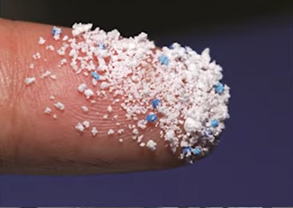
City of Goleta’s Environmental Services Division would like to share information about microplastics with the community.
What are microplastics?
Microplastics are small plastic pieces less than five millimeters long which can be harmful to our ocean and aquatic life.
Where do microplastics come from?
Microplastics come from a variety of sources, including from larger plastic debris that degrades into smaller and smaller pieces. In addition, microbeads, a type of microplastic, are very tiny pieces of manufactured polyethylene plastic that are added as exfoliants to health and beauty products, such as some cleansers and toothpastes.
Why is this a problem?
As a pollutant, microplastics can be harmful to the environment, animal health, and possibly human health. These tiny particles easily pass through water filtration systems and end up in the ocean, posing a potential threat to aquatic life.
How to help
While larger scale policy may be needed to help address microplastics, individuals can have a positive impact on plastic pollution through their lifestyle choices. Here are some ways you can help reduce microplastics in the environment:
- Avoid purchasing products with excess packaging
- Choose glass or metal drink containers over plastic
- Avoid disposable plastic bags and bring reusable bags with you
- Avoid single use plastics as much as possible
- Choose natural fibers over synthetic garments
- Participate in shoreline and neighborhood cleanups
Learn more about microplastics and what you can do to help in the incredibly detailed and accessible video: “Ten Facts You Need to Know about Microplastics” by PhD candidate Imari Walker, Duke University. This video was shared by the California Water Quality Monitoring Council, State Water Resources Control Board, and also includes information from academic articles and research therein.

